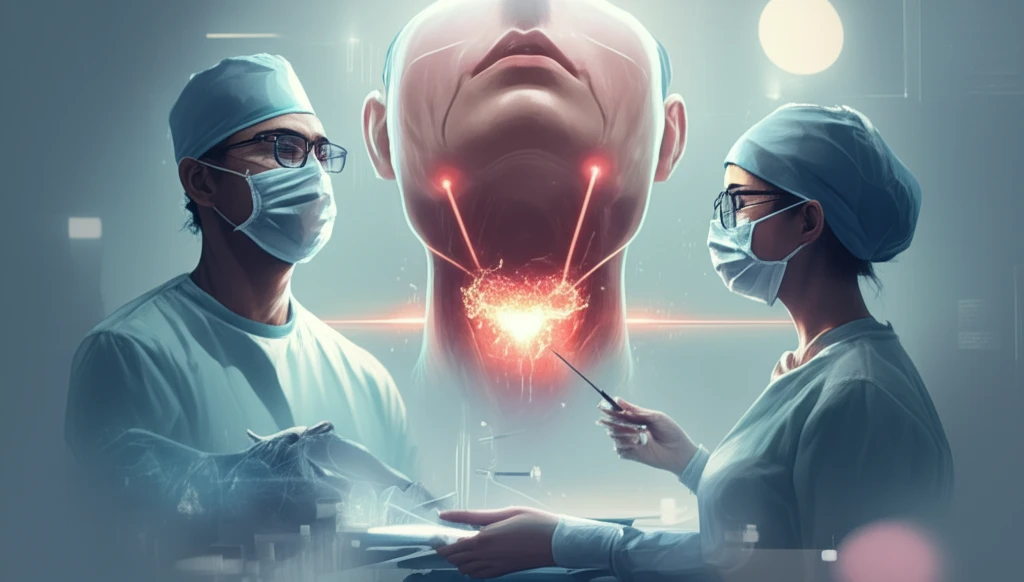
Clearing the Air: Understanding Laser Microsurgery for Throat Tumors
"A comprehensive look at transoral laser microsurgery (TLM) for pharyngeal and laryngeal tumors, focusing on pathology, margin evaluation, and improved outcomes."
Transoral laser microsurgery (TLM) has emerged as a powerful alternative to traditional open surgery for treating tumors of the pharynx and larynx. Unlike conventional surgery, TLM prioritizes the preservation of the organ and its functions while effectively removing the tumor. This approach translates to significantly lower morbidity and mortality rates for patients, marking a substantial advancement in surgical oncology.
TLM particularly shines in the treatment of early-stage tumors of the larynx and hypopharynx, offering precise tumor removal with minimal impact on surrounding tissues. While its role in managing larger, more advanced tumors is still evolving, TLM's ability to accurately assess tumor boundaries remains a key focus of ongoing research and refinement.
However, TLM presents unique challenges, particularly in interpreting histological specimens. The thermal effects of the laser on tissues and the piecemeal fashion in which tumors are often resected can complicate pathological analysis. To mitigate these challenges, surgeons play a crucial role in clearly marking resection margins on specimens, ensuring accurate orientation for pathologists. This collaborative approach is essential for optimizing treatment outcomes and minimizing the risk of recurrence.
What Are the Key Goals of Histopathologic Studies in TLM?

Histopathologic studies of surgical specimens obtained from pharyngolaryngeal tumors serve several critical objectives. These studies provide essential information that guides treatment decisions and influences patient outcomes.
- Confirming or Excluding Remnant Tumor: This is especially important in cases of suspected tumor recurrence, where inflammatory and fibrotic changes can mimic carcinoma.
- Determining Histologic Characteristics: Identifying the specific subtype and grade of differentiation helps to predict tumor behavior and guide treatment strategies.
- Establishing Tumor Extension: Determining the extent of tumor involvement in laryngeal structures and the depth of infiltration is crucial for accurate staging and prognosis.
- Assessing Surgical Margins: Evaluating the resection margins for the presence of tumor cells is essential for predicting the risk of recurrence and guiding the need for additional treatment.
The Future of TLM: A Collaborative Approach to Improved Outcomes
The assessment of surgical margins in TLM remains a challenging endeavor that requires close collaboration between surgeons and pathologists. When affected margins are identified, a range of options must be considered, including further surgical enlargement, adjuvant radiotherapy, or close monitoring in cases where follow-up is easily achievable. The decision-making process should be tailored to the individual patient, taking into account tumor characteristics, patient preferences, and the potential risks and benefits of each treatment approach. As TLM techniques continue to evolve and our understanding of tumor biology deepens, a collaborative, patient-centered approach will be essential for optimizing outcomes and improving the quality of life for individuals affected by pharyngeal and laryngeal cancers.
